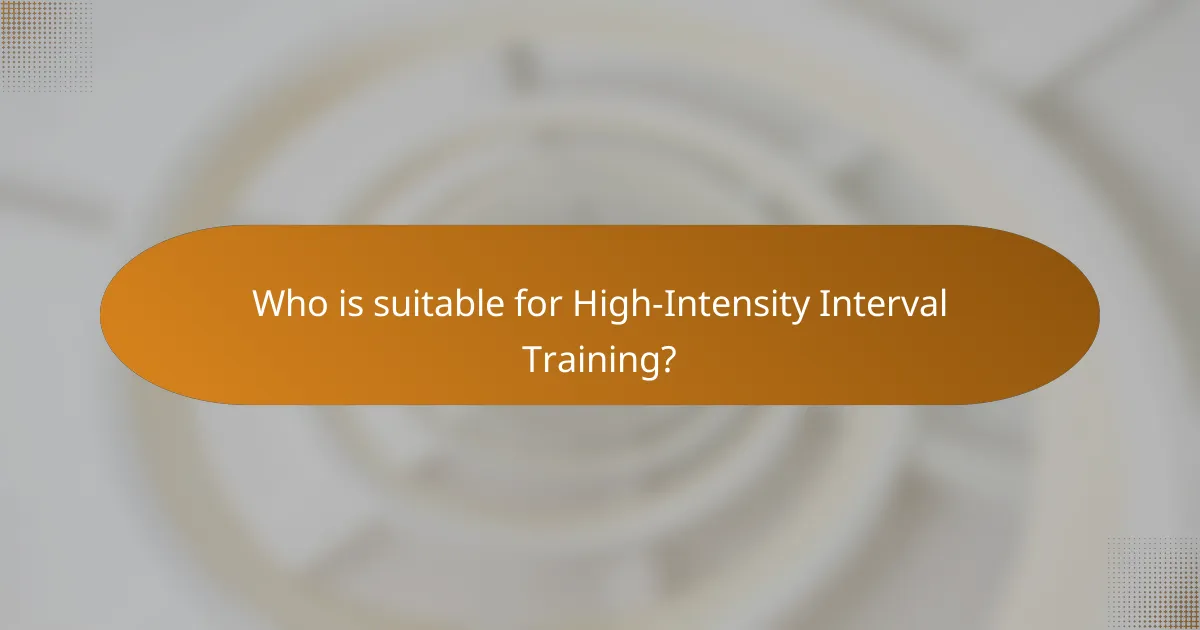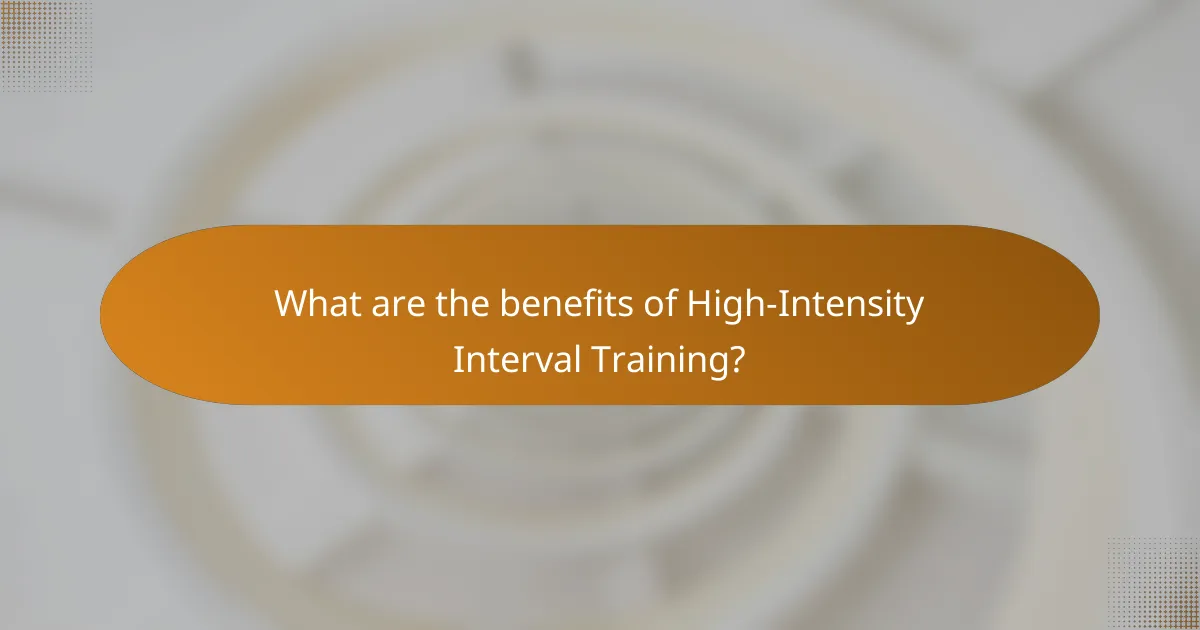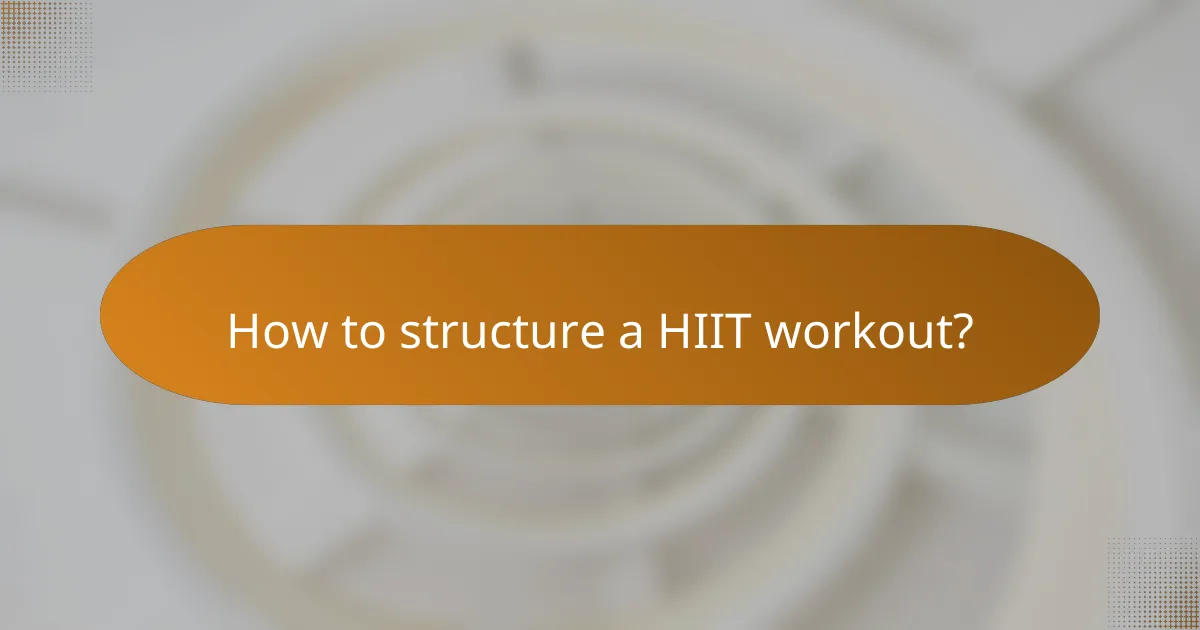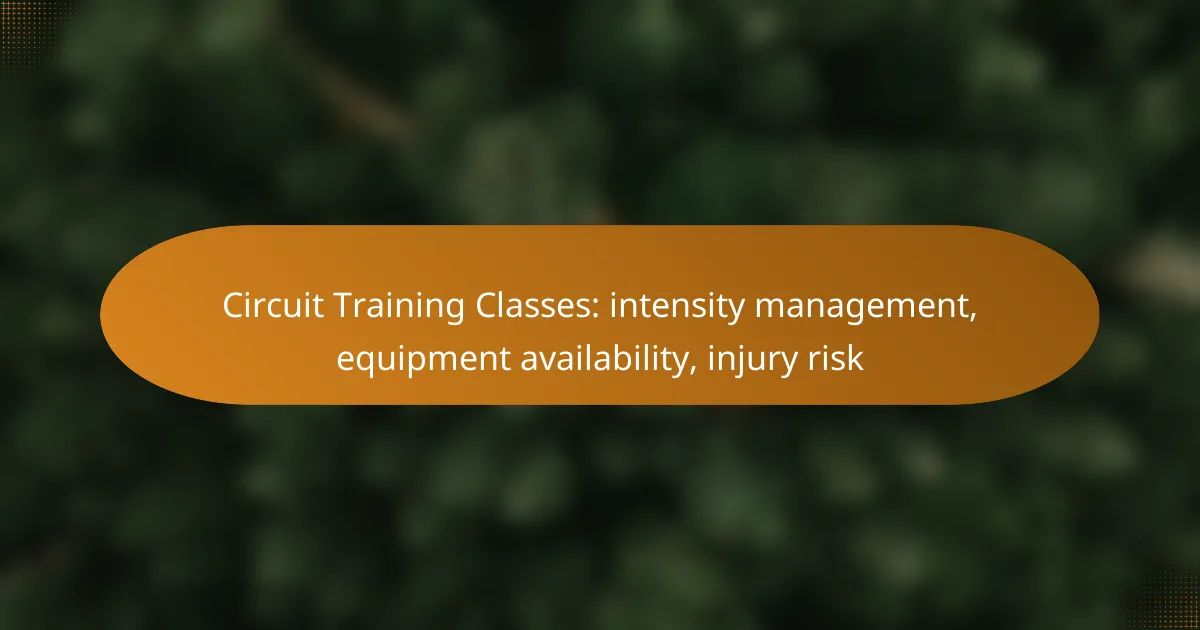High-Intensity Interval Training (HIIT) offers an efficient way to enhance fitness levels, but it comes with potential risks, including injury and overtraining. The demanding nature of HIIT can lead to injuries from improper technique and insufficient recovery. Therefore, it’s crucial for individuals to assess their personal fitness levels and health status before engaging in such intense workouts.

What are the injury risks of High-Intensity Interval Training?
High-Intensity Interval Training (HIIT) can lead to various injury risks primarily due to its demanding nature and the intensity of the workouts. Common injuries often stem from improper technique, overexertion, and inadequate recovery time.
Common injuries associated with HIIT
Injuries related to HIIT typically include strains, sprains, and overuse injuries such as tendonitis. The most frequently affected areas are the knees, shoulders, and lower back, often due to high-impact movements and repetitive stress. Participants may also experience muscle soreness, which can be a sign of overtraining.
Preventative measures for injury
To minimize injury risks, it is crucial to start with a proper warm-up and gradually increase workout intensity. Incorporating rest days into your routine allows the body to recover and adapt, reducing the likelihood of overuse injuries. Listening to your body and adjusting workouts based on fatigue levels is essential.
Importance of proper form
Maintaining proper form during HIIT exercises is vital for preventing injuries. Poor technique can lead to undue stress on joints and muscles, increasing the risk of strains and sprains. Consider working with a qualified trainer to ensure correct movement patterns, especially when performing complex exercises.

How to avoid overtraining with HIIT?
To avoid overtraining with High-Intensity Interval Training (HIIT), it’s essential to listen to your body and incorporate adequate recovery time into your routine. Monitoring your training intensity and ensuring a balanced workout schedule can help prevent burnout and injuries.
Signs of overtraining
Common signs of overtraining include persistent fatigue, decreased performance, and increased irritability. You may also experience disrupted sleep patterns, elevated resting heart rate, and a lack of motivation to train. Recognizing these symptoms early can help you adjust your training plan before serious issues arise.
Other indicators can include frequent injuries, mood swings, and prolonged muscle soreness. If you notice these signs, it may be time to reassess your training intensity and volume.
Recovery strategies
Implementing effective recovery strategies is crucial for preventing overtraining. This can include active recovery days, where you engage in low-intensity activities like walking or yoga, allowing your body to recuperate. Additionally, consider incorporating techniques such as foam rolling and stretching to enhance muscle recovery.
Nutrition also plays a vital role in recovery. Ensure you consume a balanced diet rich in protein, healthy fats, and carbohydrates to support muscle repair and energy replenishment. Staying hydrated is equally important, as dehydration can exacerbate fatigue and hinder recovery.
Importance of rest days
Rest days are essential for preventing overtraining and promoting overall fitness. Taking regular breaks allows your muscles to recover and adapt to the stresses of HIIT, ultimately leading to improved performance. Aim for at least one to two rest days each week, depending on your training intensity and personal fitness level.
During rest days, focus on activities that promote relaxation and recovery, such as light stretching or meditation. This approach not only aids physical recovery but also helps maintain mental well-being, ensuring you stay motivated and engaged in your training program.

Who is suitable for High-Intensity Interval Training?
High-Intensity Interval Training (HIIT) can be suitable for a wide range of individuals, particularly those looking to improve their fitness levels efficiently. However, it’s essential to consider personal fitness levels, health status, and training experience before starting a HIIT program.
Beginner considerations
Beginners should approach HIIT with caution, as the intensity can lead to injury if not managed properly. Starting with lower intensity intervals and gradually increasing the effort can help build endurance without overwhelming the body.
It’s advisable for beginners to incorporate longer rest periods and fewer repetitions initially. A simple structure could involve 20 seconds of activity followed by 40 seconds of rest, allowing time to adapt to the demands of HIIT.
Age-related suitability
HIIT can be beneficial for various age groups, but older adults should consider their physical condition and any pre-existing health issues. Tailoring workouts to include lower-impact exercises can reduce injury risk while still providing cardiovascular benefits.
Younger individuals may handle higher intensity levels more easily, but they should still focus on proper form and technique to prevent injuries. Regardless of age, it’s crucial to listen to the body and adjust the intensity as needed.
Health conditions to consider
Individuals with certain health conditions, such as heart disease, diabetes, or joint issues, should consult a healthcare professional before starting HIIT. Modifications may be necessary to accommodate specific health needs and ensure safety during workouts.
For those with injuries or chronic pain, low-impact alternatives or modified HIIT routines can be effective. Always prioritize safety and consider working with a fitness professional to develop a suitable plan.

What are the benefits of High-Intensity Interval Training?
High-Intensity Interval Training (HIIT) offers numerous benefits, including improved cardiovascular fitness, increased metabolic rates, and time efficiency. These advantages make HIIT a popular choice for those looking to enhance their fitness levels in a shorter amount of time.
Improved cardiovascular health
HIIT can significantly enhance cardiovascular health by increasing heart rate and improving circulation. This type of training challenges the heart and lungs, promoting better oxygen delivery throughout the body.
Studies suggest that engaging in HIIT can lead to lower blood pressure and improved cholesterol levels, which are crucial for reducing the risk of heart disease. Incorporating HIIT into your routine a few times a week can yield noticeable improvements in heart health.
Increased metabolic rate
One of the key benefits of HIIT is its ability to elevate the metabolic rate, even after the workout has ended. This phenomenon, known as excess post-exercise oxygen consumption (EPOC), can lead to increased calorie burning for hours post-exercise.
HIIT workouts typically involve short bursts of intense activity followed by rest or low-intensity periods, which can effectively boost metabolism. This makes HIIT an efficient option for those looking to lose weight or maintain a healthy weight.
Time efficiency
HIIT is renowned for its time efficiency, allowing individuals to achieve significant fitness gains in shorter workout sessions. Many HIIT workouts can be completed in 20 to 30 minutes, making it ideal for those with busy schedules.
For example, a typical HIIT session might include 30 seconds of sprinting followed by 30 seconds of walking, repeated for several rounds. This structure maximizes workout intensity while minimizing time commitment, making it a practical choice for many.

What equipment is recommended for HIIT?
For high-intensity interval training (HIIT), minimal yet versatile equipment is ideal. Commonly recommended items include dumbbells, kettlebells, resistance bands, and a jump rope, which can enhance workouts while allowing for a variety of exercises.
Best HIIT gear for home workouts
When setting up for HIIT at home, focus on equipment that offers flexibility and adaptability. Dumbbells and kettlebells are excellent for strength training, while resistance bands provide varying levels of resistance for different exercises. A sturdy mat can also enhance comfort during floor workouts.
Consider investing in a jump rope for cardio intervals, as it is inexpensive and effective for improving cardiovascular fitness. If space allows, a stability ball or a set of medicine balls can also add variety to your routine.
Popular HIIT classes and programs
Many fitness studios and online platforms offer HIIT classes that cater to various fitness levels. Popular programs often incorporate a mix of strength training and cardio, typically lasting between 20 to 45 minutes. Look for classes that provide modifications for beginners and advanced options for seasoned athletes.
Some well-known programs include Beachbody’s “Insanity,” Les Mills’ “GRIT,” and various offerings on fitness apps like Peloton or Nike Training Club. These programs usually emphasize short bursts of intense activity followed by brief rest periods, making them effective for maximizing calorie burn.

How to structure a HIIT workout?
Structuring a High-Intensity Interval Training (HIIT) workout involves alternating between short bursts of intense exercise and recovery periods. This approach maximizes cardiovascular benefits while minimizing time spent exercising, making it efficient for various fitness levels.
Sample HIIT workout plans
A typical HIIT workout can include exercises like sprinting, cycling, or bodyweight movements. For example, a simple plan might involve 30 seconds of sprinting followed by 1 minute of walking, repeated for 15 to 20 minutes. Another option could be a circuit of exercises such as burpees, jump squats, and push-ups, performed for 20 seconds each with 10 seconds of rest in between.
For beginners, starting with a 1:2 work-to-rest ratio is advisable, while more advanced individuals can aim for a 1:1 ratio. Always listen to your body and adjust the intensity and duration based on your fitness level.
Duration and intensity guidelines
HIIT workouts typically last between 15 to 30 minutes, depending on the intensity and fitness goals. The key is to maintain a high effort level during the work intervals, which should feel challenging but manageable. Aim for around 80-90% of your maximum heart rate during these bursts.
As for frequency, incorporating HIIT sessions 2 to 3 times a week is generally effective for most people. Ensure adequate recovery time between sessions to prevent overtraining and reduce the risk of injury.



